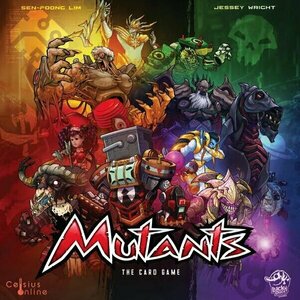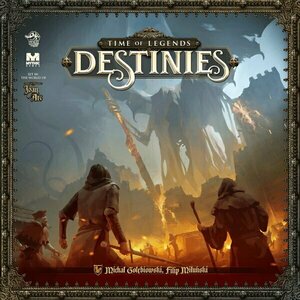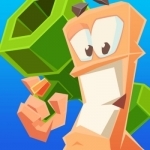Purple Phoenix Games (2266 KP) rated Mutants in Tabletop Games
Mar 11, 2022
Mutants is a crazy-themed deck building, hand management, fighting, card game for one to four players. Usually in this instance I would put together a Solo Chronicles review, but I wanted to first get the multiplayer rules down and then delve into solo. In any case, this game pits players against each other in a royal rumble where controlling mutants to fight one another most effectively and efficiently will earn the player riches galore. Come check out the world of Mutants.
To setup, well, there are many steps. The biggest and perhaps most confusing step is creating the decks of mutants that will be used by players throughout the game. I will recommend you follow the rulebook for drafting your team, or simply use one of the provided pre-constructed team suggestions. Otherwise, place the main board on the table, along with the power and scoring tokens for each player. Players choose their player board according to color chosen, take their starting deck, and divide their Advanced Mutant deck into three piles, with the top card flipped face-up. Players draw a hand of six Basic Mutant cards (one of each type initially) and the battle may begin!
Mutants is played over five rounds, tracked on the main board. Each round encompasses three phases: Crush the Competition, Move Active Mutant, and Take Action. As the game progresses, the power tokens for players will be moving up and down the Power Track. If, at the start of the current player’s turn, an opponent’s power token is located in one of the last three Power Track spaces (named the Dread Zone), and the current player’s token is on the Fury Space (furthest along the Track), then the current player will score immediate bonus points by Crushing the Competition.
The first turn will not utilize the Move Active Mutant phase, but on subsequent phases, this will need to be resolved. A player’s board consists of three main slots: Left Mutant, Active Mutant, and Right Mutant. Mutants may only enter the Active Mutant slot in the middle, so if a Mutant is currently placed in that slot, it will need to be moved either to the Left or Right slot, at the player’s discretion. Should all slots be filled, one of the Mutants will need to be moved off the board to make room for the new one. Once this happens, the Mutant’s Leave Ability (at the bottom of the Mutant’s card) will activate. This could give the player more Power, some Attacking abilities, or other unique abilities. Once a card leaves their slot and applies their Leave Ability, it is placed in the Discard space at the bottom of the player board.
Now that the Active Mutant slot is available, the current player may choose from one of the Take Action choices: Deploy Mutant, Breed, or Incubate. To Deploy Mutant, simply play a card from hand to the Active Mutant slot, activating the Deploy Ability once placed. These Deploy Abilities could range from cycling (draw a card from the deck and discard a card from the hand), gaining Power, or even reactionary abilities. Breeding Mutants requires the player to discard two cards from hand whose type icons match those of one of the face-up Advanced Mutant cards atop the player board. Discarding these cards allows the Advanced Mutant to enter play on the Active Mutant slot. Finally, the player may instead choose to Incubate an Advanced Mutant from one on offer by discarding one card (and it does NOT need to match icons) and placing the chosen Advanced Mutant on the Incubator slot on the left side of the board. These incubated Advanced Mutants will be placed atop the draw deck at the end of the round, so it will be drawn during the next round.
If at any time a player needs to draw a card from their draw deck and there are no cards remaining, they will first choose a card from their Discards to Freeze, by placing it in the appropriate Cryo Freezer on the right side of the player board. Frozen cards will be scored at game end, and can really boost a final score.
At the end of the round players will perform a few more tasks and setup for the next round. First, the Power Tokens are scored according to which is in first place along the Track and so on, using the red and black VP numbers printed on the main board. The round marker is advanced one level, and each Mutant in Incubation is moved to the players’ draw decks. Players then draw a new hand of six cards, and Power Tokens are reset according to the previous round’s placement, in reverse order. The player whose Power Token is now furthest behind will be the starting player for the next round.
Play continues in this fashion of moving Mutants around, taking actions, and jockeying for supremacy along the Power Track until the end of the fifth round. At that time, the final VPs are awarded for the Power Track placement, and all cards in the Cryo Freezer are tallied. The player with the most VP at the end of the game is the winner of Mutants!
Components. Okay, I have some thoughts here, and more than just, “oh hey, they are nice.” The game comes with a bevvy of cards, some wooden tokens, and a couple “boards.” I used quotations because only the main board is an actual board. The player boards are slick cardstock and, while functional, feel a little cheap. The cards themselves are all super great and the artwork is appropriate and quite excellent. I have a couple issues with some other components, however. The Power and Score Tokens are the only wooden components in the box and I just do not understand them. They look like Sauron/Spartan helmets, or someone who is crying because they just shoved a fork into the power outlet. Now, there are four of each type in different colors, and though the colors aren’t the primary colors we have grown to accept for our player colors, they have swapped out the green for purple, and I think the game is colorful enough to include more exciting colors. So I’m not a fan of the Power and Score Tokens. Similarly, I don’t really understand the insert that comes with the game. I see that it is setup to hold TONS of cards, and maybe there were/are plans for many many expansions, but the base game can be housed in two of the 14 total card slots provided. Also, I have no idea what is going on in the middle of the insert, but I also don’t own any of the expansions yet, so hopefully those molded spots are actually meant to hold something. Everything else, though, is great!
For me, art and components are very high on my list of items that affect how much I enjoy a game. Now, I can live with the wonky Power and Score Tokens, and I suppose I don’t mind carrying around a giant box of cards, when the game could ALMOST fit inside a box the size of Bohnanza or Point Salad or the like. That said, I have definitely enjoyed my plays of Mutants. The rulebook is a little daunting at first, mostly because the theme is unique and the game style is similarly different to me. Once the game gets into the thick of it, though, strategy and tactics take over so strongly. Each card is carefully considered for its usability as either a card to be played or discarded for varying effects. I love that about this game.
This is certainly more than a “deck builder,” even though deck building and hand management are at the forefront of the mechanics here. You aren’t necessarily building your deck and cycling through it quickly enough for me to consider this a true deck builder alone, but using each card for different purposes certainly increases the replayability with Mutants. When is the best time to freeze a card versus keeping it in the deck for its abilities? Do I move off the Left Mutant or keep it around for another turn? Why did I pick these Advanced Mutants during the draft, when I have crappy supporting cards? Every play of Mutants has been a wonderful challenge of maximizing my deck and choosing just the right opponents to attack with my monstrous creations. Purple Phoenix Games gives this one a horrifically delightful 5 / 6. I hate having to bling out my games, but I think I will probably try to find replacements for the Power and Score Tokens (though maybe a little spray paint will help?), and look into grabbing one or all of the expansions so that I may be able to fill up that confusing insert. I look forward to my next games of this, and to getting the word out on this little gem I finally tried.
Purple Phoenix Games (2266 KP) rated Destinies in Tabletop Games
Jan 29, 2022
Destinies is a hybrid app-driven adventure board game for one to three players. In it, players will be choosing their characters and how to play them, along with the path of their individual destinies across several campaign scenarios. When playing multiplayer, the player who completes their destiny first will win. When playing solo (which is also amazing), the player wins when they successfully complete their destiny.
DISCLAIMER: We are using the Kickstarter version of the game. We do have the expansions from the KS campaign, but will not be using those for this review. Also, we do not intend to cover every single rule included in the rule book, but will describe the overall game flow and major rule set so that our readers may get a sense of how the game plays. For more in depth rules, you may purchase a copy from the publisher directly or from your FLGS. -T
Usually I list out the steps to setup a game in this section, but there are so many little items and steps to be taken that I will simply show you, the reader, how a scenario may look once setup. The app will instruct players how to create their character’s stats and which map tiles should be placed out initially. Typically, though, each player will receive a player board, Destiny card (with their character headshot on one side and their Destiny choices on back), two main dice, three effort dice, and one gold coin. Once setup, the app will drive the story along and the players will be rolling dice and making choices in order to win the game or scenario.
Each player will be given their Destiny card with two distinct Destiny paths on the backside. These paths correlate with the current scenario, and the player will be able to choose one of the two given paths to help move their games forward. However, sometimes players will switch their Destiny mid-game due to several factors including successes on previous tasks or current inventory. The only way to win the game is to complete a Destiny, so staying on track is paramount in this open sandbox game – it is incredibly easy to become sidetracked and lose sight of specific tasks to be performed.
Each turn a player may move to a new tile, to previously-explored tiles, or points of interest on specific map tiles. These points of interest could be unique characters to be visited, or more general spaces on the tile represented by tokens. Sometimes visiting a POI (point of interest) will have the player rolling dice to complete tests, initiating trade with the POI NPC, revealing information about their distinct Destiny, or even issuing side quests. Players take their chances by visiting a POI because only one may be visited on a turn. Once a player has moved and visited a POI, their turn is over and the next player’s turn begins.
The most interesting aspect of this game is the experience tracker and results of tests. Player stats are divided between Intelligence, Dexterity, and Power (Strength for my D&D readers). These stats are constantly in flux due to tests and experience, and levels range from 1-12+ on the player board. A player will roll both main dice and any effort dice they wish on each test, and the total result is compared to the discs present on the main player board. One success is counted for each disc’s value equal to or below the rolled result. For example, if the roll is a 6, and the player has a disc on 3 and another on 6 the player counts two successes. Effort dice add values to the rolled result, and one side of these dice depict a star, which counts as one success. Throughout the game players will be moving their skill marker tokens (discs) up and down the tracks. Sometimes this is due to a test being failed or succeeded, but sometimes experience tokens are earned. A player may improve their skill levels by two total values on the tracks for each experience token discarded. Players may choose which tracks, and may maximize their character’s skill or spread out the experience across multiple skills.
Play continues in this fashion of referencing the app for story and plot items, players working toward completing their Destinies, and adventuring across the land rolling tests and improving skills until one player finishes their Destiny and wins the game!
Components. As always, I am going to be honest here by stating I believe that Destinies packs the box with the best components I have seen in a game. The multi-layered insert is perfectly formed and well-thought out, all the cardboard tokens are super-thick, the dice are so fun to handle and roll, the cards and other components feature incredible artwork, and did I mention there’s about a thousand minis in this game? I am reluctant to even call some of these things minis as they are large and in charge for SURE. I have zero complaints or comments on the components present in Destinies. Lucky Duck knocks it out of the park once again. Incredible.
I actually backed this one on Kickstarter just because it comes from Lucky Duck Games. I had played Chronicles of Crime and loved it, and just wanted to try something different but using a similar system. Typically I don’t keep up with the comments and updates to a game I have backed because I enjoy being surprised by the product that arrives at my door. Destinies was certainly a surprise to me, and I have been kicking myself in the butt for not getting it to the table the very first day I received it.
Destinies is my favorite Lucky Duck Games title, and that is saying a ton, as I rave about every game of theirs I have played. I hope you all back me up here, and if you haven’t yet tried this one, I hope you visit your closest friend or board game cafe that owns it. The tutorial scenario is great, and the campaign scenarios have been awesome so far. Okay, yes, when I first played it with Laura, my wife made several comments about it being a 3 hour game, but once that first one is completed, the subsequent plays run much smoother.
What I love so much about this is how indefinitely expandable it is. Most of the components are multi-use (akin to all the character cards in the Chronicles of Crime games), and can be used in campaign after campaign. The drawbacks I see for this, though, is any sort of waning interest in it forcing designers to abandon plans to create more scenarios. Could a new scenario pack be an acceptable expansion versus a large expansion box with oodles of new components and minis? I think so, but I am no designer. Could the Millennium Series treatment be given to Destinies? Absolutely! This system does not need to be played in a medieval fantasy world. It could be molded to almost anything, and that gives me excited shivers over the future of this game.
If you are anything like me and have now embraced the hybrid gaming trend, I highly recommend Destinies. I plan to also review all the expansions in the near future, so do look out for those, but please do yourself a giant favor and pick up Destinies. The excellent storytelling, great components, and just amazing fun helps Purple Phoenix Games give this one a perfectly deserved 12 / 12, and a Golden Feather Award! I can’t stop thinking about it and how I would play it differently next time, and hopefully after I have played through the expansion material I will be able to restart from the very beginning with different characters and choices. It’s a sign of a great game when I can’t stop thinking about it, and I do believe Destinies currently is knocking at the door of my Top 10 Games of All Time. No, it’s there. It’s totally there. TOP 10 BABY!!
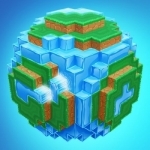
World of Cubes Survival Craft
Games and Entertainment
App
Create your own worlds with thousands of random players or friends online in Multiplayer mode or...

Apple Tree - Hangman For Kids
Games and Education
App
Apple Tree, a Hangman-like word game for kids, can now be enjoyed on your iPhone or the iPod Touch! ...
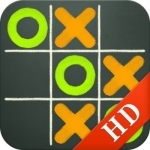
Tic Tac Toe - Deluxe HD
Games
App
The simple, funny and mini game Tic Tac Toe is now available on your iPad! Tic-tac-toe(or...
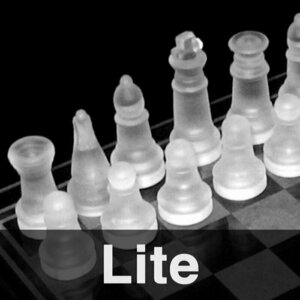
Chess - tChess Lite
Games and Entertainment
App
tChess Lite is the popular chess game designed just for the iPhone, iPod touch, and iPad. tChess is...
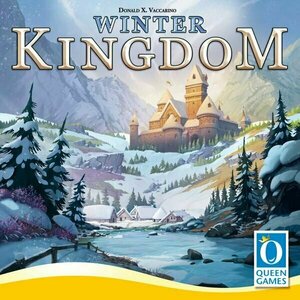
Winter Kingdom
Tabletop Game
Winter Kingdom features seven, double-sided hexagonal map tiles that are randomly arranged into the...

Video & TV SideView: Remote
Entertainment and Lifestyle
App
Notice regarding discontinuation of TV Programs and Video on Demand Thank you very much for your...
